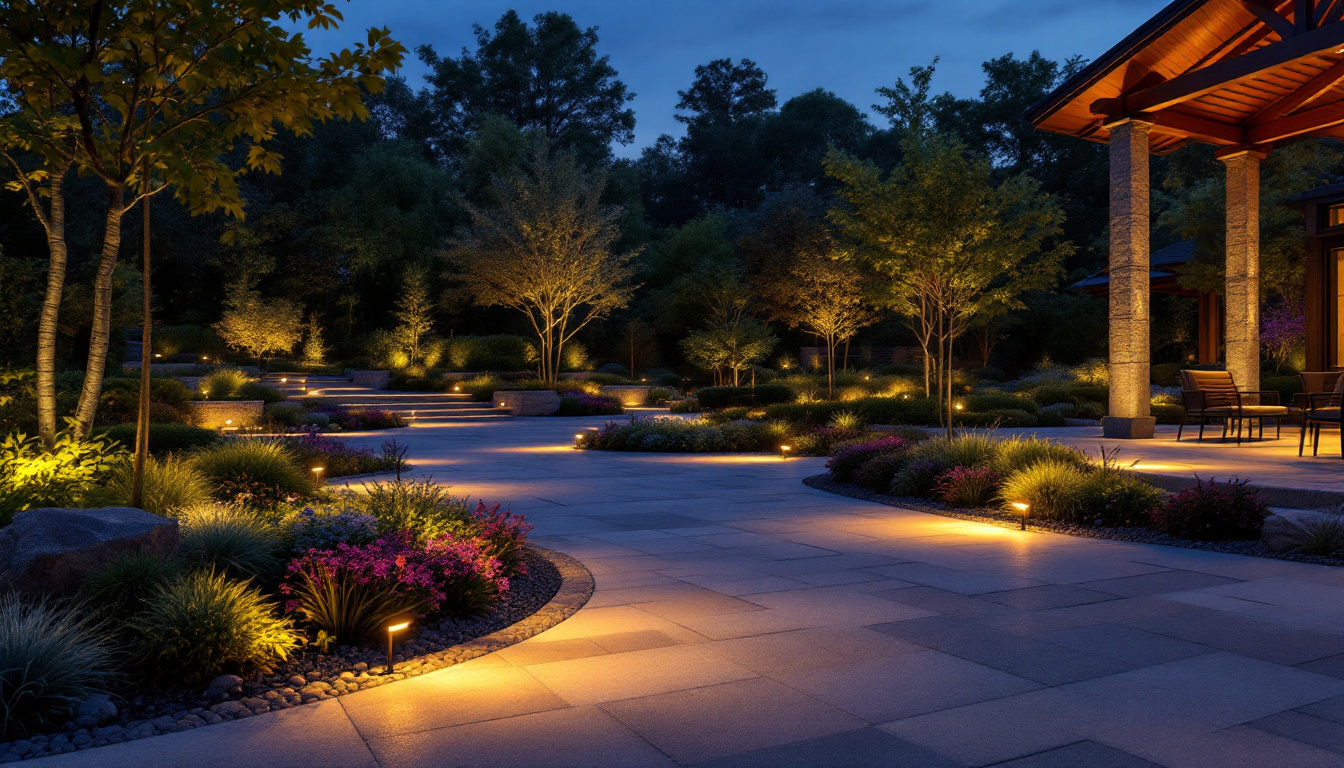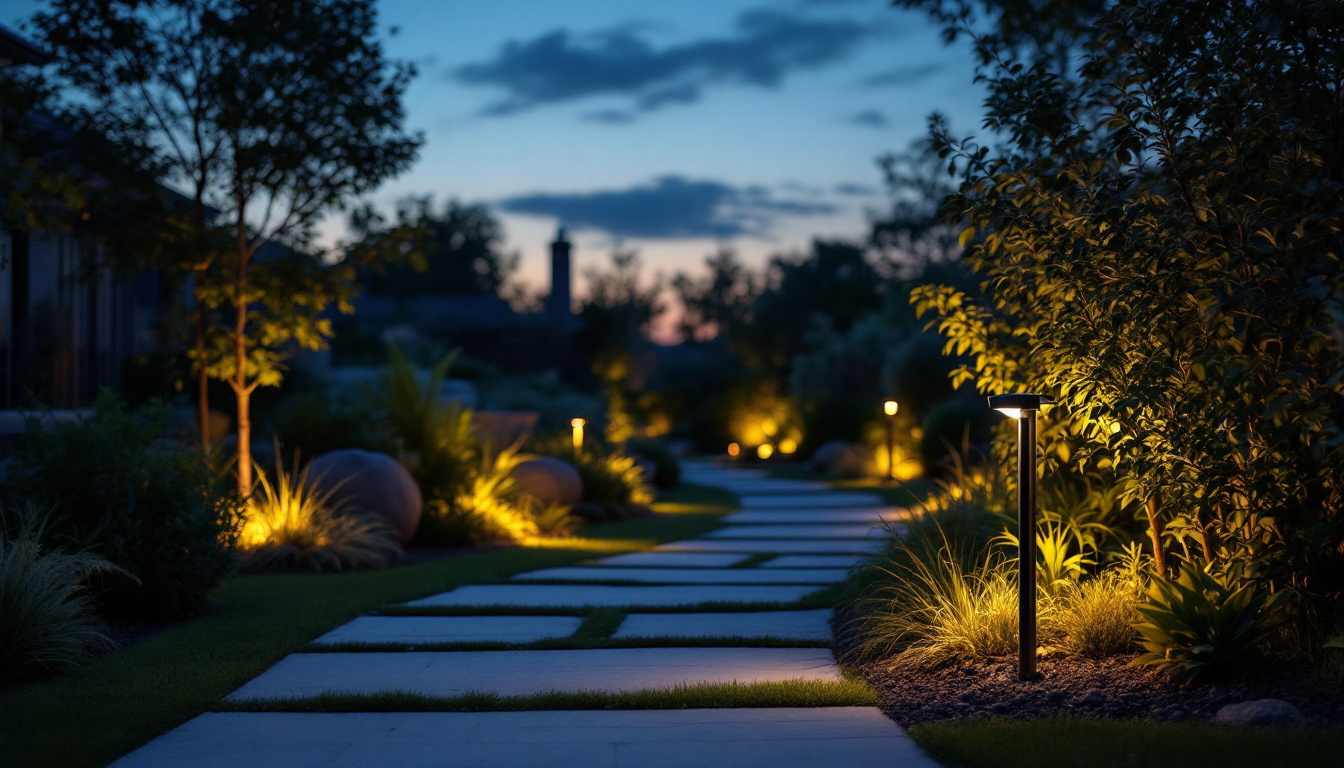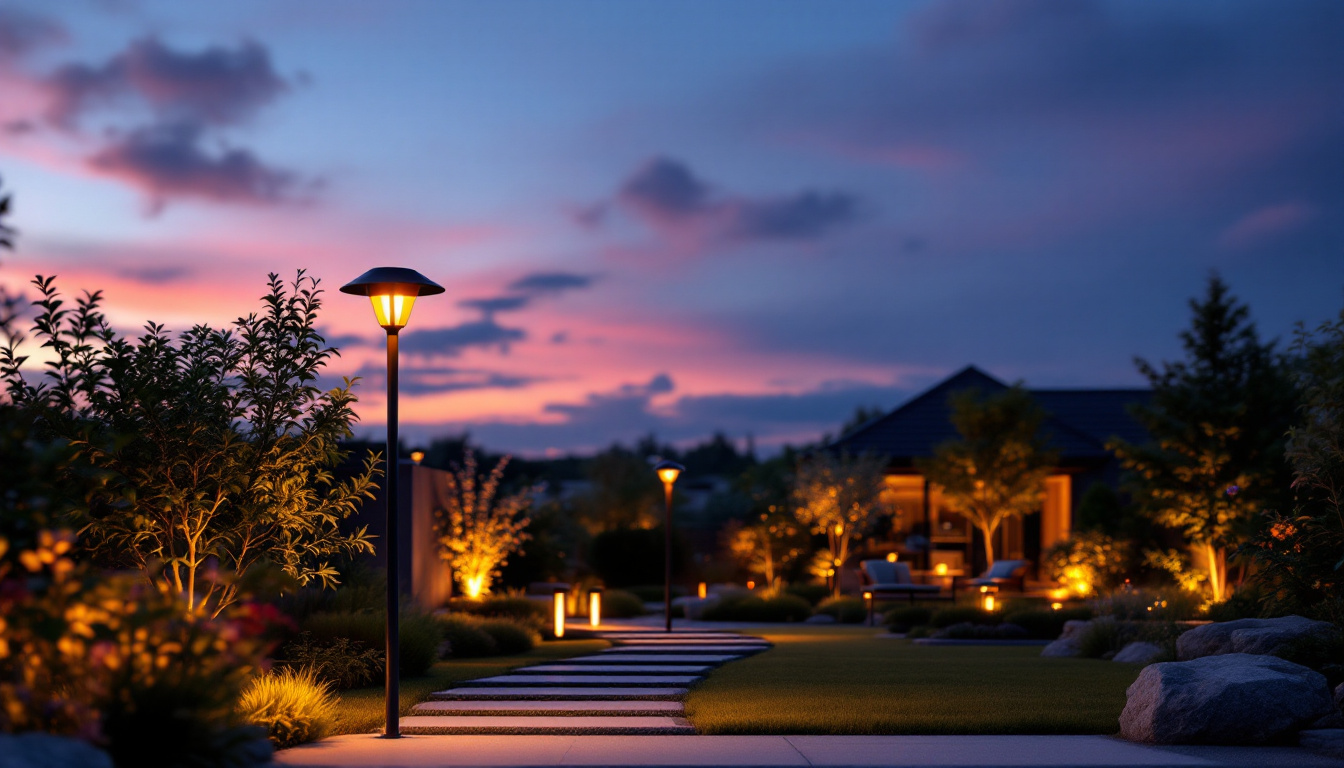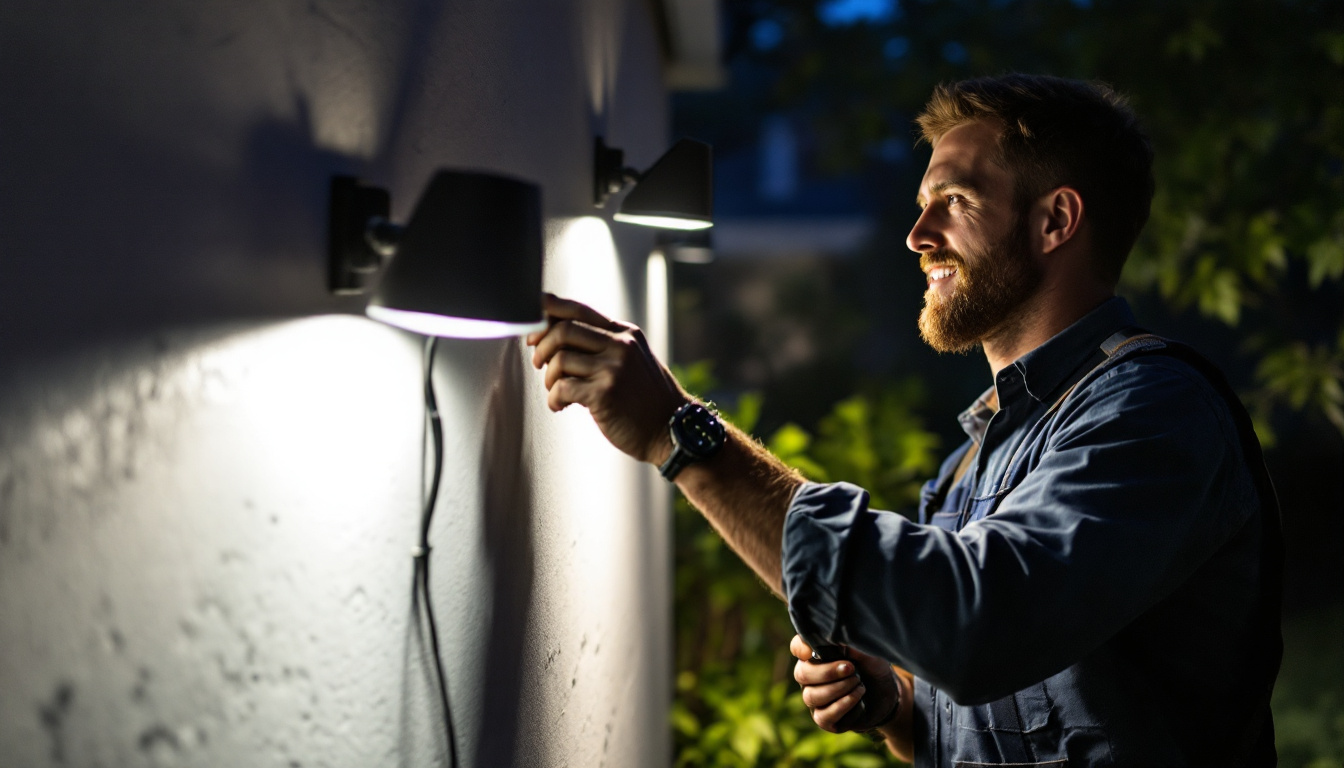
In the realm of outdoor lighting, LED technology has revolutionized the way spaces are illuminated. For lighting contractors, understanding the nuances of LED lights for outdoor applications is essential for delivering quality installations that meet client expectations. This article delves into expert advice tailored specifically for lighting contractors, covering various aspects of LED lighting, including benefits, installation tips, and design considerations.
LED lights have gained immense popularity in outdoor lighting due to their numerous advantages over traditional lighting solutions. Understanding these benefits can help contractors make informed recommendations to clients.
One of the most significant advantages of LED lights is their energy efficiency. Compared to incandescent or halogen bulbs, LEDs consume significantly less power while providing the same or even greater illumination levels. This efficiency translates to lower energy bills for clients, making LED lights an attractive option for both residential and commercial outdoor spaces.
Moreover, the long lifespan of LED lights—often exceeding 25,000 hours—means that clients will spend less on replacements and maintenance, further enhancing the cost-effectiveness of this lighting solution. In fact, some studies suggest that switching to LED lighting can reduce energy consumption by up to 80%, allowing businesses to allocate their resources more effectively. This substantial reduction not only benefits the client’s bottom line but also contributes to a more sustainable future by decreasing the demand for energy production.
In an age where sustainability is a priority, LED lights stand out as an environmentally friendly choice. They contain no harmful substances like mercury, which is found in some traditional bulbs. Additionally, their lower energy consumption reduces the overall carbon footprint associated with outdoor lighting.
Contractors can leverage this eco-friendly aspect when discussing lighting options with clients who are conscious of their environmental impact. Promoting LED lights as a sustainable choice can enhance a contractor’s reputation and appeal to a broader client base. Furthermore, many LED products are designed to be fully recyclable, which further minimizes waste and promotes a circular economy. By choosing LED lighting, clients not only make a smart financial decision but also contribute to a healthier planet for future generations.
LED lights come in a myriad of styles, colors, and intensities, allowing for creative freedom in outdoor lighting design. Whether illuminating pathways, highlighting architectural features, or creating ambient lighting in gardens, LEDs can be tailored to suit various aesthetic preferences.
This versatility enables contractors to meet diverse client needs, providing customized solutions that enhance the beauty and functionality of outdoor spaces. Understanding the different types of LED lights available—such as floodlights, spotlights, and string lights—can help contractors offer valuable insights during the design phase. Additionally, the ability to adjust color temperatures—from warm whites to cool blues—allows for the creation of different moods and atmospheres, making outdoor areas more inviting and enjoyable. This adaptability not only enhances the visual appeal but also plays a crucial role in safety and security, as well-lit spaces deter unwanted activity and promote a sense of comfort for users.
Proper installation is crucial for ensuring the longevity and effectiveness of outdoor LED lighting. Here are some best practices that lighting contractors should consider when installing LED lights outdoors.
Before installation, it is essential to assess the outdoor environment. Factors such as weather conditions, landscape features, and existing electrical systems can impact the performance of LED lights. For instance, in areas prone to heavy rain or snow, selecting weather-resistant fixtures is vital to prevent damage and ensure longevity.
Additionally, understanding the layout of the outdoor space can help in determining optimal placement for lights. This includes considering the height at which fixtures will be mounted and the angle of illumination to avoid glare and ensure even coverage. Furthermore, taking into account the surrounding flora and fauna can be beneficial; certain types of lighting can attract insects or disturb local wildlife. By being mindful of these factors, contractors can create a harmonious lighting design that complements the natural environment.
When installing outdoor LED lights, proper wiring is critical. Contractors should ensure that all wiring complies with local electrical codes and standards. Using appropriate gauge wire is essential, especially for longer runs, to prevent voltage drop and ensure consistent performance.
Moreover, utilizing low-voltage LED systems can be advantageous for outdoor applications. These systems are generally safer and easier to install, making them ideal for residential projects. Contractors should also consider incorporating timers or smart controls to enhance energy efficiency and convenience for clients. Smart lighting systems can allow homeowners to customize their outdoor lighting schedules, adjusting brightness based on the time of day or even controlling lights remotely via smartphone apps. This not only improves usability but also contributes to energy savings, aligning with the growing trend toward sustainable living.
After installation, thorough testing of the lighting system is necessary to ensure everything functions as intended. This includes checking for proper brightness levels, ensuring no fixtures are flickering, and confirming that all lights are correctly aligned.
Adjustments may be needed after the initial setup. For instance, if certain areas are under-illuminated, contractors should be prepared to reposition fixtures or add additional lights to achieve the desired effect. This attention to detail can significantly enhance client satisfaction and the overall success of the project. Additionally, it may be beneficial to conduct a follow-up visit after a few weeks to assess how the lighting performs in different weather conditions and to make any further refinements. By maintaining open communication with clients and offering ongoing support, contractors can build lasting relationships and establish a reputation for quality service in the competitive outdoor lighting market.
Designing outdoor lighting with LEDs requires a thoughtful approach that balances aesthetics, functionality, and safety. Here are some key considerations for lighting contractors to keep in mind.
Outdoor spaces often serve as extensions of the home, and lighting plays a crucial role in creating ambiance. Contractors should discuss with clients the desired mood they wish to achieve, whether it’s a warm, inviting glow for entertaining or bright, focused lighting for security purposes.
Using dimmable LED fixtures can offer flexibility in achieving the right ambiance. This feature allows clients to adjust lighting levels based on different activities or times of day, enhancing the usability of outdoor spaces.
Effective outdoor lighting should not only illuminate but also highlight key features of the landscape or architecture. For example, uplighting can be used to accentuate trees, sculptures, or architectural elements, creating visual interest and depth.
Contractors should consider layering different types of lighting—such as ambient, task, and accent lighting—to create a well-rounded design. This approach not only enhances the aesthetic appeal but also improves functionality, ensuring that outdoor areas are usable and safe.
Safety is paramount in outdoor lighting design. Well-lit pathways, entrances, and driveways can significantly reduce the risk of accidents and enhance security. Contractors should recommend placing lights at strategic points to illuminate these areas effectively.
Incorporating motion sensors or timers can further enhance security by ensuring that lights activate when needed, deterring potential intruders. Educating clients about the importance of safety in outdoor lighting can help them make informed decisions that prioritize both aesthetics and security.
Once the installation is complete, ongoing maintenance is crucial to ensure the longevity and performance of outdoor LED lighting systems. Here are some maintenance tips that contractors can share with their clients.
Outdoor fixtures are often exposed to the elements, leading to dirt and debris accumulation. Regular cleaning of LED fixtures is essential to maintain optimal performance and appearance. Contractors should advise clients to clean fixtures at least twice a year, using a soft cloth and mild detergent to avoid damaging the finish.
Additionally, checking for any obstructions, such as overgrown plants or debris, can help ensure that the light is not blocked and is functioning at its best.
Regularly inspecting electrical connections is vital for preventing issues such as flickering lights or complete outages. Contractors should recommend that clients check connections for corrosion or damage, especially in areas with high humidity or extreme weather conditions.
Encouraging clients to keep an eye on the performance of their lighting system can help identify potential problems early, allowing for timely repairs and ensuring the system operates efficiently.
As technology continues to evolve, there may be advancements in LED lighting that offer improved efficiency or features. Contractors should stay informed about new products and technologies and advise clients on potential upgrades that could enhance their outdoor lighting systems.
For instance, integrating smart technology can provide clients with greater control over their lighting, allowing them to adjust settings remotely or set schedules. Keeping clients informed about these options can enhance their experience and satisfaction with their outdoor lighting solutions.
LED lights have transformed outdoor lighting, offering numerous benefits that lighting contractors can leverage to enhance their services. By understanding the advantages of LED technology, adhering to best installation practices, and considering design and maintenance aspects, contractors can deliver exceptional outdoor lighting solutions that meet client needs and expectations.
As the demand for energy-efficient and aesthetically pleasing outdoor lighting continues to grow, contractors who stay informed and adaptable will be well-positioned to thrive in this dynamic industry. Embracing LED technology not only benefits clients but also contributes to a more sustainable and environmentally friendly future.
Ready to elevate your lighting projects with the most efficient and cost-effective LED solutions? Look no further than LumenWholesale, where we specialize in providing contractors with the highest quality, spec-grade lighting products at wholesale prices. Say goodbye to unnecessary markups and hello to a vast selection of reliable lighting that meets rigorous industry standards. With LumenWholesale, bulk buying is a breeze, thanks to our free shipping policy, ensuring you get the best value without any hidden costs. Transform your outdoor lighting designs today by visiting Wholesale Lighting at the Best Value and experience the ideal combination of quality, affordability, and convenience.

Discover essential tips and common pitfalls for lighting contractors in our comprehensive guide on shop lighting.

Discover how outdoor motion-activated lights can revolutionize your lighting installation projects.

Discover how solar-powered landscape lights can transform your outdoor spaces into stunning, eco-friendly environments.

Discover the top benefits of floodlights for outdoor projects in this insightful guide tailored for lighting contractors.